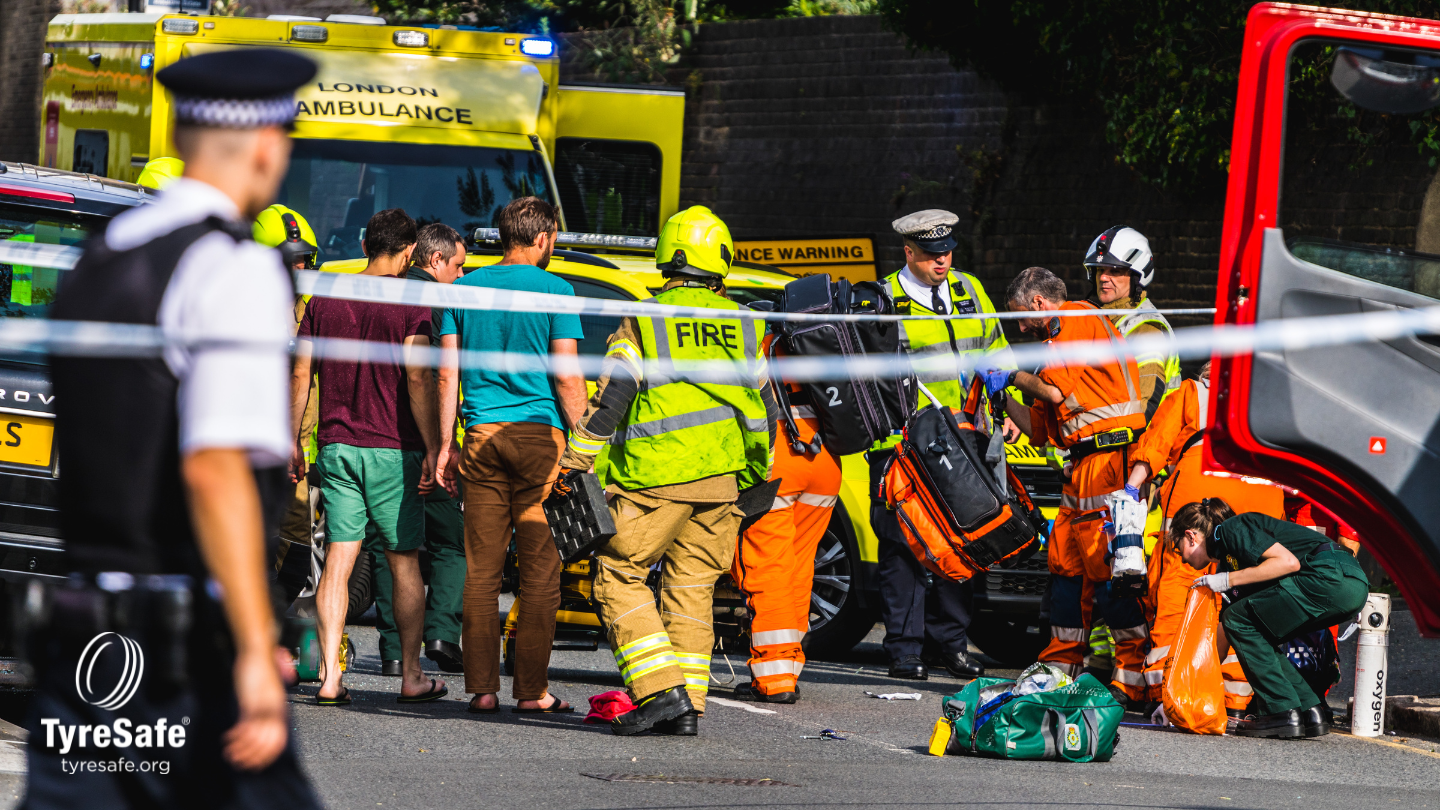Why You Should Check Your Wheels After Pothole Damage
Despite an extra being pledged to help fix potholes and damaged roads, it’s incredibly important for drivers to make even more regular checks for damage to their tyres and wheels. It warns that drivers failing to do so face an increased risk of being involved in a tyre related accident.
Driving over potholes can alter the vehicle’s steering and suspension geometries or damage critical components which can reduce vehicle safety or generate extra running costs. By ensuring wheels are correctly aligned, drivers can minimise the effects of any pothole damage and ensure they remain as safe as possible.
Visible damage such as buckled wheels or lumps in the tyre are the most obvious signs of a problem which must be addressed by a qualified professional. However, hidden problems such as cracked alloys can be just as dangerous.
The Ever Growing Number of Potholes in The UK
The current ‘pothole epidemic’ blighting the UK’s roads is not only causing added financial burden for drivers and councils, but it is also in danger of leading to a rise in the number of tyre related road casualties.
Indeed, such is the scale of the pothole problem that one TyreSafe member reported more than 100 customers with damaged alloy wheels visited one of its outlets in just one month alone.
Potholes Cost Us and The Government An Absolute Fortune
The current ‘pothole epidemic’ blighting the UK’s roads is not only causing added financial burden for drivers and councils, but it is also in danger of leading to a rise in the number of tyre related road casualties.
The stark warning has been issued by TyreSafe, the UK’s leading tyre safety organisation and comes after the consumer watchdog Which? found that Councils in England and Wales can pay out as much as £22.8m in compensation to drivers for pothole related damage.
Make Sure Your Motorbike is Pumped Up
Motorcyclists should be particularly vigilant of potholes during the spring, after damage caused by harsh winter conditions and an increase in motorbikes venturing out over longer trips over the Easter bank holiday.
The contact patch between a motorcycle tyre and the road is smaller than a car tyre’s contact patch, meaning that optimal grip is critical. Bikers rely more on the condition of the roads than car drivers, as any uneven surfaces can be felt directly by the rider when steering and cornering. A deflection caused by a pothole could easily result in the biker losing control of the bike and falling onto the road.
The ‘freeze and thaw’ effect experienced during periods of cold weather accelerates the deterioration of road surfaces and the creation of potholes. When the temperature drops, rainwater contained within cracks in the tarmac expands and breaks up the bitumen. Riding over potholes can cause significant handling problems for motorcyclists, as the resulting loss of grip reduces their ability to maintain control of the bike, particularly as they lean into corners, when stability is crucial. The impact caused by a tyre hitting a pothole could also cause damage to their tyre, potentially resulting in a bulge on the tyre sidewall as the structural integrity of the tyre is compromised.
Why tyre pressure is key to reducing wheel damage.
Correct air pressure is particularly important for safe driving. Not only is handling and cornering affected by low pressure, but when driven under-inflated for prolonged periods, tyres are more likely to overheat and suffer from rapid deflation. This type of event can be extremely difficult to control as it often occurs at high speeds on motorways risking the life of the driver, vehicle occupants and other road users as well.
Other pothole related damage that drivers are being advised to look out for include cuts, lumps or bulges in the tyre as well as any changes to the vehicle’s feel or handling which can be a sign of misalignment.
Tyres Can Suffer A ‘Hole’ Lot Of Damage
Drivers are being advised by TyreSafe, the UK’s leading tyre safety organisation, that they can minimise the damaging effects of driving over potholes by making sure their tyres are correctly inflated. Hitting a pothole can cause serious internal tyre damage, which may result in dangerous sidewall bulges, or result in cuts to the tyre which may expose cords, rendering it both dangerous and illegal.
Local authorities are facing pressure as to which roads they prioritise for repair due to cuts of up to 20 per cent in road maintenance budgets. Which means that potholes present an additional risk during already tricky driving conditions.
Potholes can cause significant damage to wheels and tyres. It’s therefore important for drivers to ensure their tyres are properly inflated to reduce any potential damage. If they do suffer the misfortune of hitting a pothole, drivers should make sure both their wheels and tyres are thoroughly inspected by a professional for signs of damage. This may occur in the form of cuts or bulges in the tyre or, as we have seen increasing cases of, hairline fractures appearing in alloy wheels.
Other effects of hitting a pothole include wheel misalignment. If there is significant misalignment the car may pull to one side or cause vibrations in the steering wheel which can be distracting and make the vehicle difficult to control. In less severe cases this can go unnoticed by the driver yet still result in increased or irregular tyre wear and higher fuel costs.
How To Check Your Wheels After Running Into A Pothole
After hitting a pothole, a buckled wheel or lump in the tyre are the most obvious signs of damage, but hidden problems can be just as dangerous. Hairline cracks in alloy wheels can allow air to gradually escape. If tyres are driven in an under-inflated state for a prolonged period, they are more likely to overheat and suffer from a rapid deflation. This type of event can be extremely difficult to control as it often occurs at high speeds on motorways.
After hitting a pothole, it’s important that drivers check their tyre pressures regularly over the next few days to assess if there is any gradual loss of air. If this does happen then it’s important that they visit a tyre specialist to have both the wheel rim and the tyre examined.
When checking pressures, TyreSafe also advises that drivers give the rest of the tyre a thorough inspection for other damage such as cuts, lumps or bulges. They should also pay particular attention to any changes in the vehicle’s feel or handling as this may be a sign of the wheels becoming misaligned.
Anyone in doubt about the condition of their wheels and tyres are advised to visit the website or call into their nearest tyre fitting centre.


